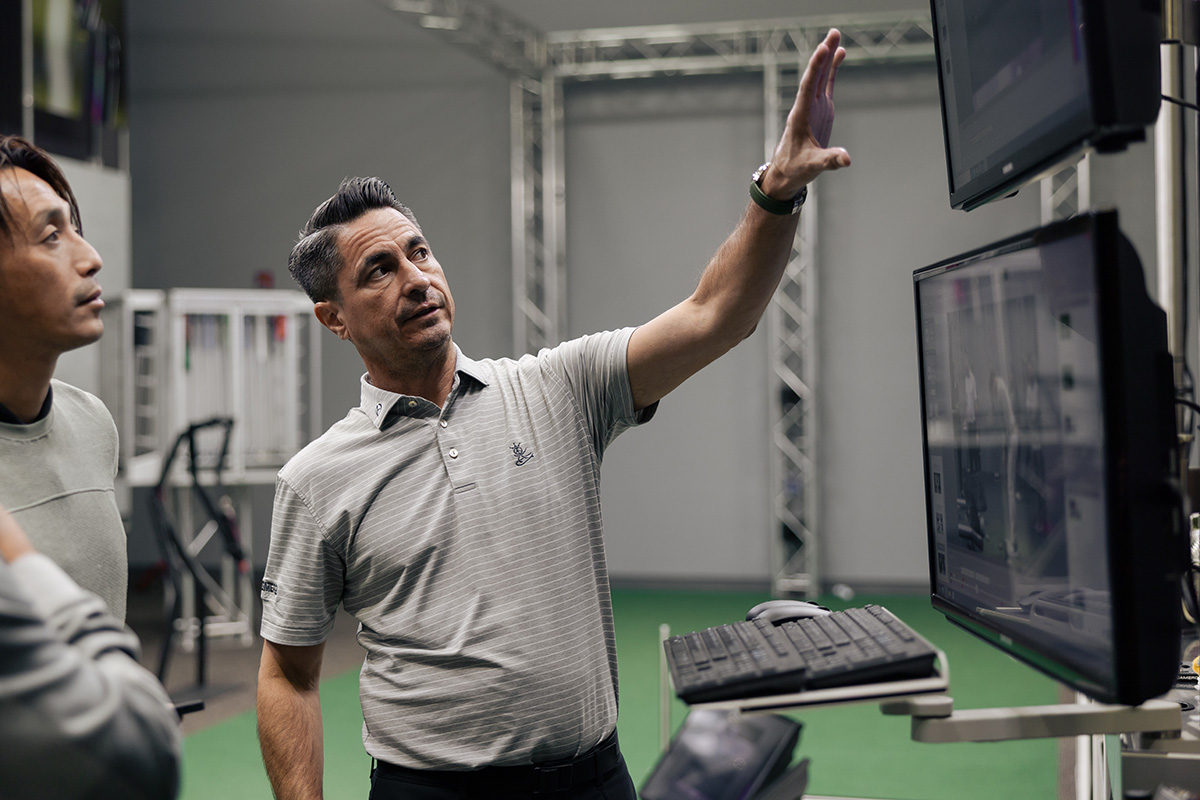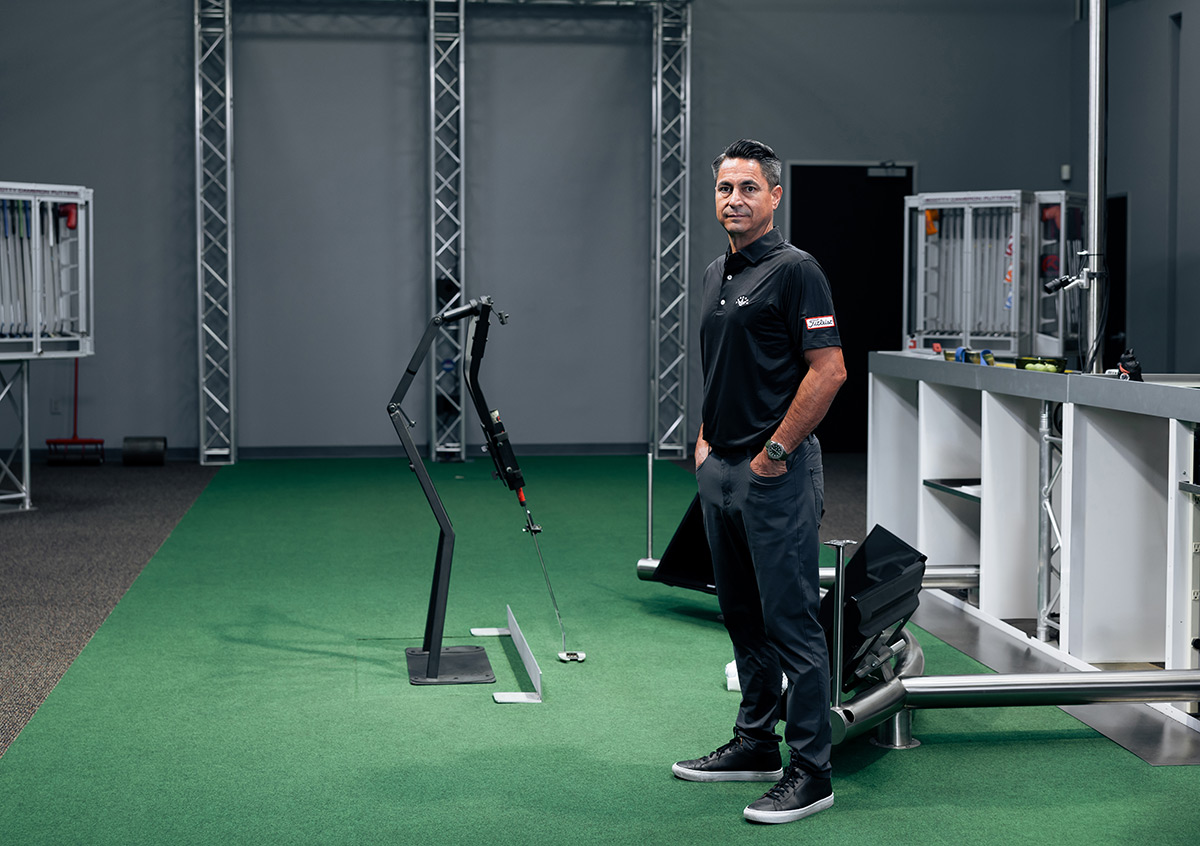Mike Bradley, Senior Marketing Director for Scotty Cameron putters, recently caught up with Paul Vizanko, Director of Player Fitting and Development at Scotty Cameron.
Paul, you've been here since the early days with Scotty. How long have you been here and what's your role at the Putter Studio?
So, I've been at Titleist since ‘96 and with Scotty since 2000. And it was everything from fitting players, helping them with builds on putters, new design, prototyping, testing, kind of A to Z. And we're in a pretty impressive place now here at the Putter Studio.
Tell us about the very first Putter Studio.
Early days, it was a small garage, big tube TV on the wall. No real heating or air conditioning that worked consistently. A workshop with hammers and devices and just a lot of tools.
What the goal in the Putter Studio when you're working with the best players in the world?
To educate them on our putters and our part of the putter process of building, which involves fitting. So, players come in looking for a new putter, maybe a new putting stroke. They want ideas on what putters will influence their putting stroke. Everything from what's my path? What putter fits this path? How do I know if the face is square at address, impact...of all kinds of questions.
What's the most important thing that an amateur golfer could learn from the players you're working with?
I would say that a lot of players overlook how important setup is, and especially my next generation players. They seem to be going from just relying on hand-eye coordination and not really utilizing the body to set up to make a consistent putting stroke.
You've said it's a lot like a full swing. And sometimes players focus on their setup in full swing and then don't transfer that to putting.
Exactly. That's really what I see the most of. And that's the education process of how they set up their body lines to create the putter path. And then I have to educate them on what toe hang is and how that's a feel that a putter can create with the right setup.
We have a variety of different putters in the line, different shapes, different alignments, different necks and shaft options. Why do we have all those options? So I can test with all different types of players, all different setups that they have, to see which one's going to be the most consistent. Most of the time, players are trying to develop a path, and it could be opposite of what their bodies allow them to do. And they think a putter can fix that. A putter can help create feel and create path, but their face awareness might not be so acute if things aren't consistent.

We've talked for years about this idea of toe flow or toe hang. But you approach it from a standpoint more of something called face awareness. How do you use toe hang in fitting and what is face awareness?
Face awareness is the player's ability to feel where the face is when the putter’s in motion. That's why it's so important to have a setup that creates a consistent putter path. Because then the player can identify if the face is opened or closed. So, I really try to identify by watching a player hit putts to get an idea of their ability to feel face awareness and their ability to adjust the face if needed. Toe hang can play a part in creating feel so the player can tell if the face is open or closed. So, then they can, if they need to, move the face in any direction they can to accommodate the path.
In our production line we have mid-bend shafts, jet necks, plumbing necks, low-bends. How can an amateur player use those to achieve different degrees of face awareness?
A number of ways. With the different necks you're going to set different hand height. You can also watch the player's eyes to see if they change position. The eyes have to be in a set position. I use necks to help the hands get the right height, which creates the right path. If I've got the right path, then I need the player to see how well they can feel where the face is, the face angle, during motion. It sounds complicated, but with the right putter you can start to develop the right path. Then, you can start to create the feel the player needs. So the putter feels like it swings itself so they don't feel like they have to close the face or open the face. If they have a consistent path, then the face should feel like it's just following the path.
Can you explain how some players choose a neck or shaft based on how they want to align at address?
Necks come in different, let's say, offsets. And we'll also create views of the putter head which aid in alignment. So, if a player needs to see the entire topline, I can use a single bend shaft. That's going to give him the visual of the entire topline of the face. If a player needs a plumbing neck as an extra angle to see if the face is square or open, then I can use that. A lot of players don't understand that they use these visuals in the neck. And I try to identify that when they come in.
Are there aspects of a putter design that have an impact on distance control?
Distance control starts with consistent path, and a consistent path is going to give a player the proper weighting and consistent feel of the putter head weight. Then, they can create a tempo that's consistent. That's where I see the players that have the best speed control. The sound of a putter gives the player feedback on how well they've hit it or how far the ball is going to go. We fine tune a lot of putters to create more sound sometimes to give the player a better feel of how to judge distance.
What is something that the best players in the world all seem to have in common?
The best players in the world all have a stable lower body that helps create putter head path. A lot of players look at me and say, hey, you know what, we're working on lower body stability. They're asking questions at this point, and then they see how it develops a good upper body, which creates putter head path.
How are tour players responding to the new Studio Style designs?
It's incredible. I'm getting players from around the world on tours that immediately are saying it's got the right sound and feel. It's not too soft and not to too hard. It's the perfect combination to give them good feedback on how well they've hit the putt and helping with distance control.
Talk to us about the importance of what a player hears from the putter.
The player needs to feel—and the sound needs to translate to—how well they've struck the putt. So good sound feedback from the putter gives the player good feedback.
Why do tour players like the high-contrast alignment on the new Studio Style Squareback and Fastback putters?
The high-contrast alignment really gives the player of a clear view of the face angle. By dividing up the putter, the face really stands out, which makes it easy to square. It helps players keep the putter face square through impact and the back part of the putter makes players feel like they can push that through the impact zone.
How big of an area do you want to see that putter face square?
Typically, about all the best players have the face square about the length of three golf balls. That's pretty common for me to see. With the high-contrast alignment, they can push the back end of the putter through and keep the putter square.
We have the new Phantom 5.2 and 7.2 in the line. What are the benefits of a plumbing neck on a mallet?
The plumbing neck on a mallet gives a player the best of both worlds. Most of these players start out using blades, and they want something a little bit more stable, a larger footprint. Nothing too crazy, but just a little bit more stability. So, I can take the look that they're used to with the blade and add it to a mallet. When they're looking at the new mallets with a plumbing neck, it looks very familiar to them.
Explain how tour players use the plumbing neck for alignment.
They'll use the plumbing neck on a mallet to set the hand height that's consistent with what they're used to, but also for the alignment value that the neck brings. As small as it is, there's sort of a secret world of the various ways players align using that. The plumbing neck gives the player a parallel line to their target line, and it's also perpendicular to the face. So, it's one extra angle for them to align to make it easy to square the face. That little notch on the plumbing neck is the horizontal. And then they use that either for body alignment or they kind of make a T with the leading edge. They'll use the angles on the plumbing neck to not only align their body, but the face.
These are visuals they don't always pick up on until I take that plumbing neck away and give them a jet neck. Suddenly, they're having trouble lining up the face. But you put a plumbing neck on there and instantly it gives them one extra line for the face alignment.

